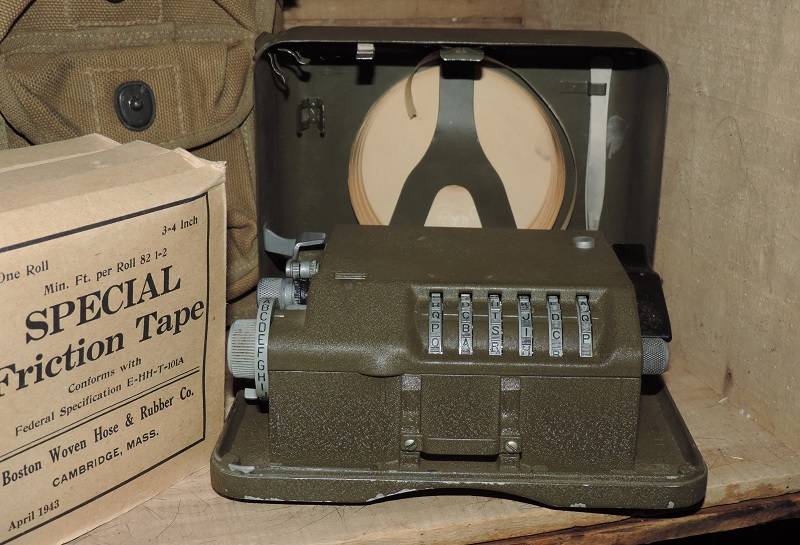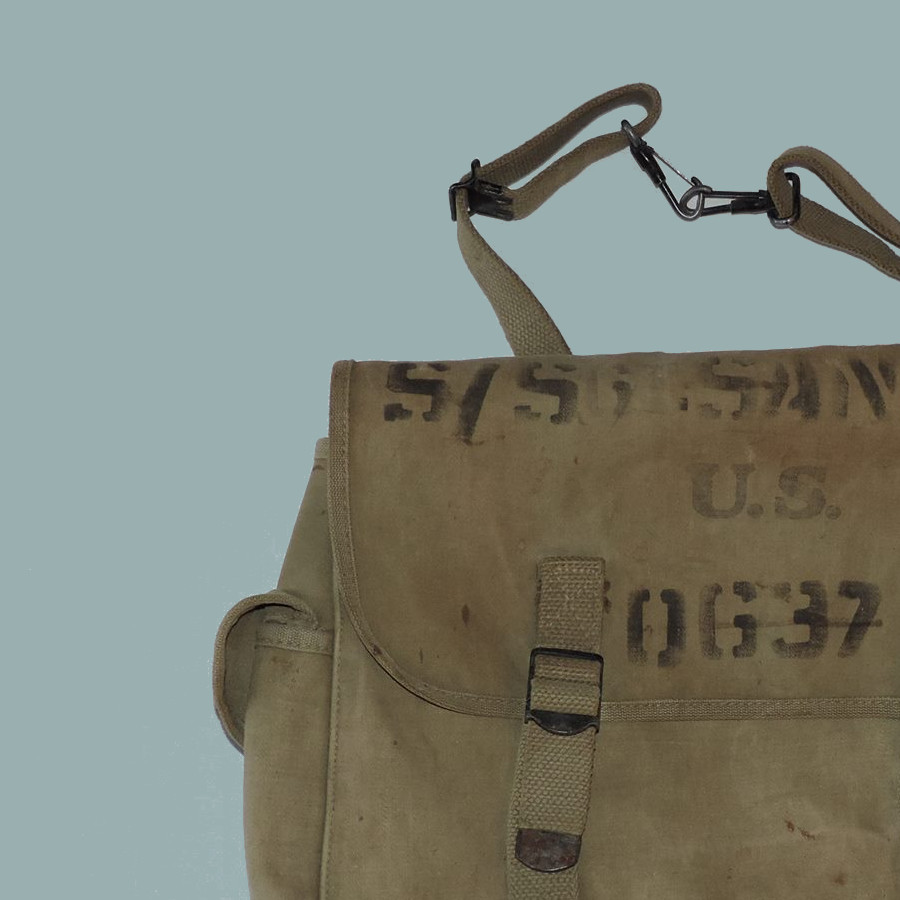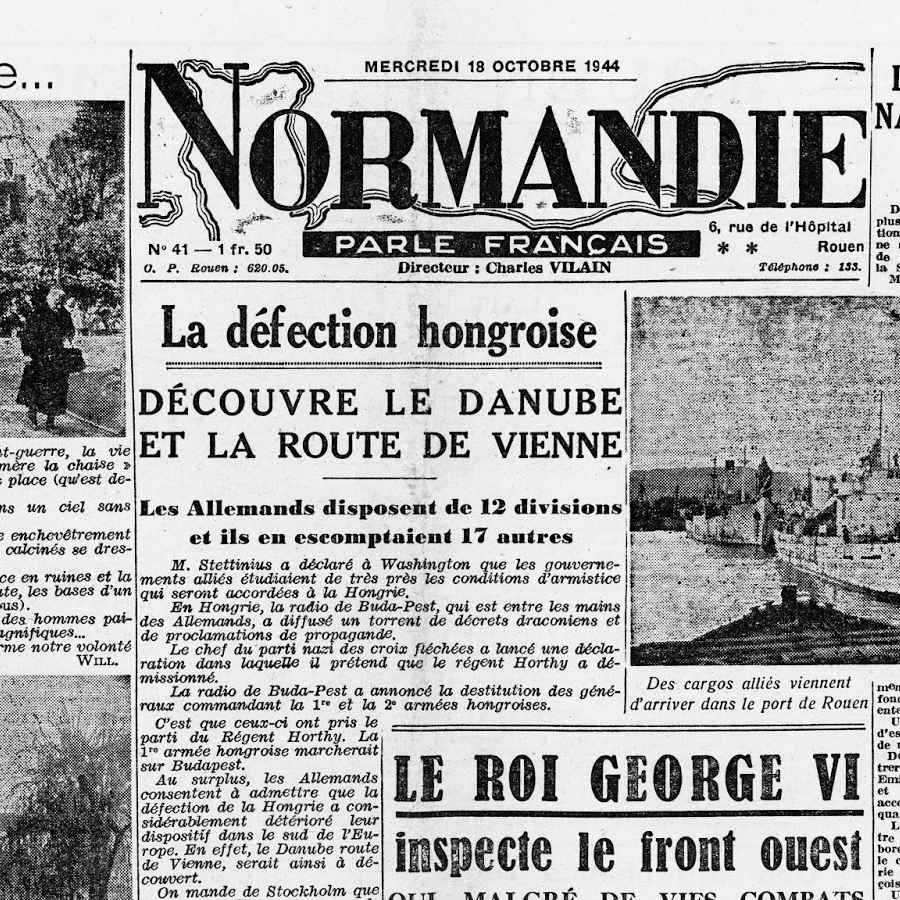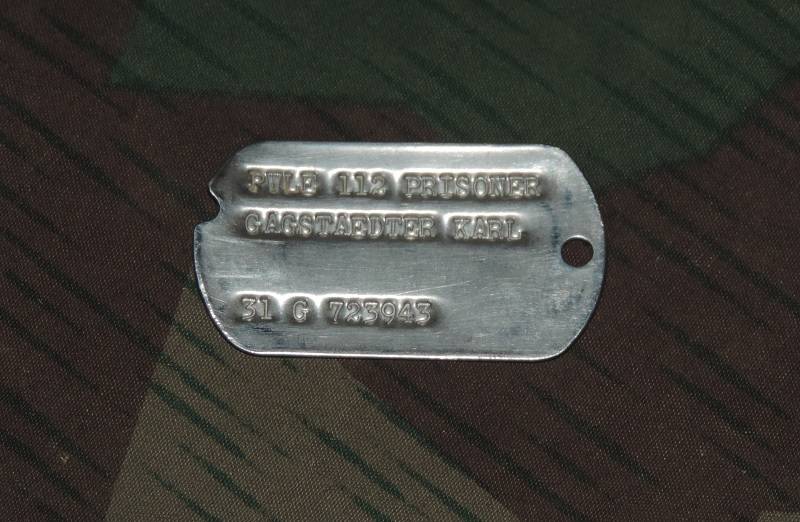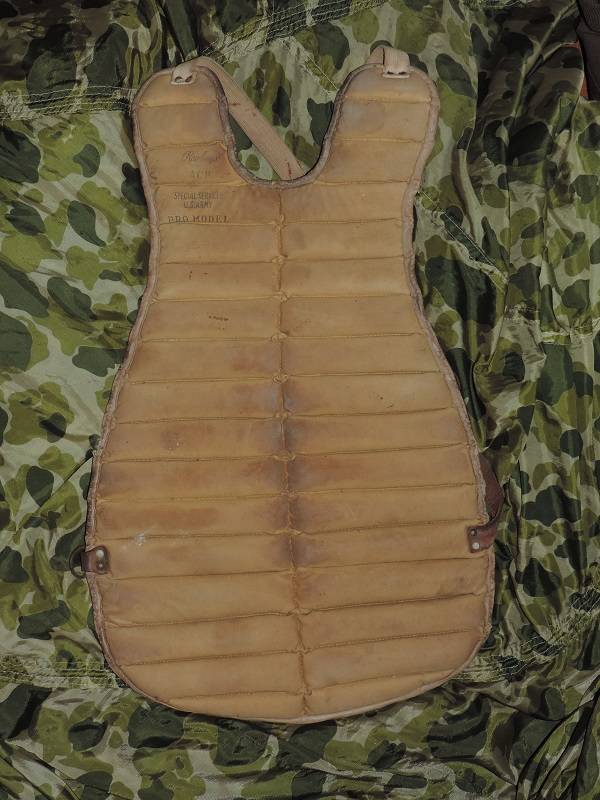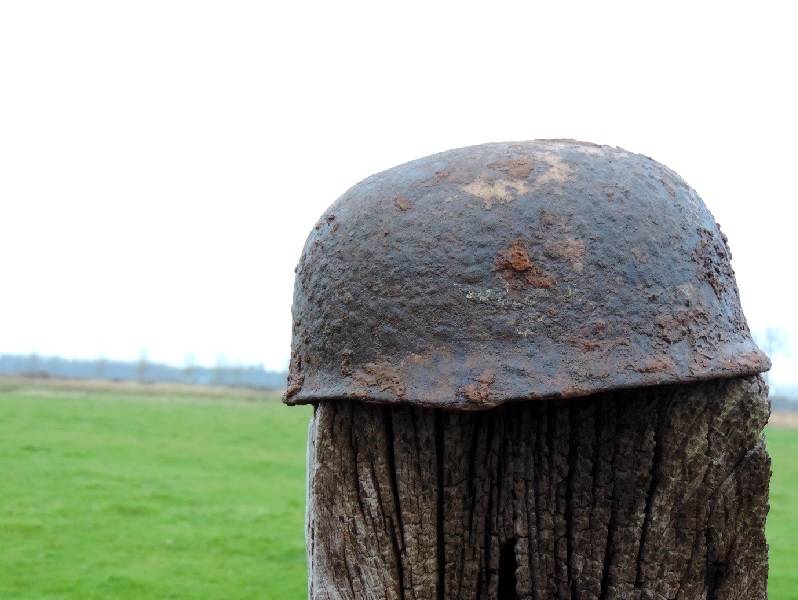by Bertrand Froger | 21 Mar 2017
Nationality: USA – US Army
Year/time: World War II (1943)
In detail: This typewriter-like machine is actually a US Army Converter M209 encryptor. This is a mechanical coding apparatus designed for the encryption and decryption of secret messages. It had to be destroyed before being captured, which explains the scarcity of this type of equipment. Stowed in a canvas cover, it can be worn as a shoulder or belt, as seen on some known shots of paratroopers of the 101st Airborne Division ready to jump in Normandy. This model B, there is also a version A to the different coding system, is new. Encrypted messages could then be attached to the paw of a traveling pigeon.
New items, events, promotional offers … all are good reasons to subscribe to our Petite MUSETTE Newsletter.
by Bertrand Froger | 21 Mar 2017
Nationality: USA – Germany
Year/time: World War II (1944-1946)
In detail: This “dog tag” is special. Itwas beaten in the name of a German soldier, following his capture as a prisoner of war in Normandy. For example, the name and the surname of the soldier Karl Gagstaedter, his prisoner number and PWLE 112, correspond to Prisoner of War Labor Enclosure No. 112, in other words the German Prisoners of War labor camp in La Glacerie in Northern Cotentin. This dog tag was found in 2015 on an annex of the main camp, located in Valognes.
New items, events, promotional offers … all are good reasons to subscribe to our Petite MUSETTE Newsletter.
by Bertrand Froger | 21 Mar 2017
Nationality: USA – US Army
Year/time: World War II (1939-1945)
In detail: This fleece canvas protector is a catcher’s chestpiece, a key post during a Baseball game. This sport is popular and very popular in the ranks of the US Army. Soldiers like to have fun and have fun between brothers in arms. This Rawlings brand (a sporting equipment brand still in existence today) has the particularity of being a regulatory model of the army, recognizable by the inscription “Special Services US ARMY” stamped. This is a rare version commissioned by the US Army’s entertainment service.
New items, events, promotional offers … all are good reasons to subscribe to our Petite MUSETTE Newsletter.
by Bertrand Froger | 21 Mar 2017
Nationality: German Army – Luftwaffe
Year/time: World War II (1938-1945)
In detail: This German paratrooper helmet, quite different from that used in the other corps of the army, was found in 2017 in the area of Carentan, on former positions of the Fallschirmjäger-Regiment-6 commanded by Colonel Von der Heydte. These elite soldiers defended the sector in June 1944. They were nicknamed “Green Devils” and fiercely resisted the US divisions dropped and landed on Utah Beach. This relic still bears the emblem of the Luftwaffe and received a two-tone camouflage (green and sand).
New items, events, promotional offers … all are good reasons to subscribe to our Petite MUSETTE Newsletter.
by Bertrand Froger | 21 Mar 2017
Year/time: World War II (1941-1945)
In detail: Jump boots are imagined by William P. Yarborough for the American airborne weapon but many other soldiers will perceive it, notably in the corps of the Engineers. Among the most famous manufacturers are Corcoran, Red Wing and Herman Shoes. Although there are a few differences in the make-up, these shoes have in common a high upper at the back, two rows of 12 eyelets, a leather tip at the toe and a two-piece sole at the beveled heel at 45°. Here, the laces are made of leather, as at the factory outlet, but it is not uncommon to find them associated with canvas laces or parachute hangers.
New items, events, promotional offers … all are good reasons to subscribe to our Petite MUSETTE Newsletter.



